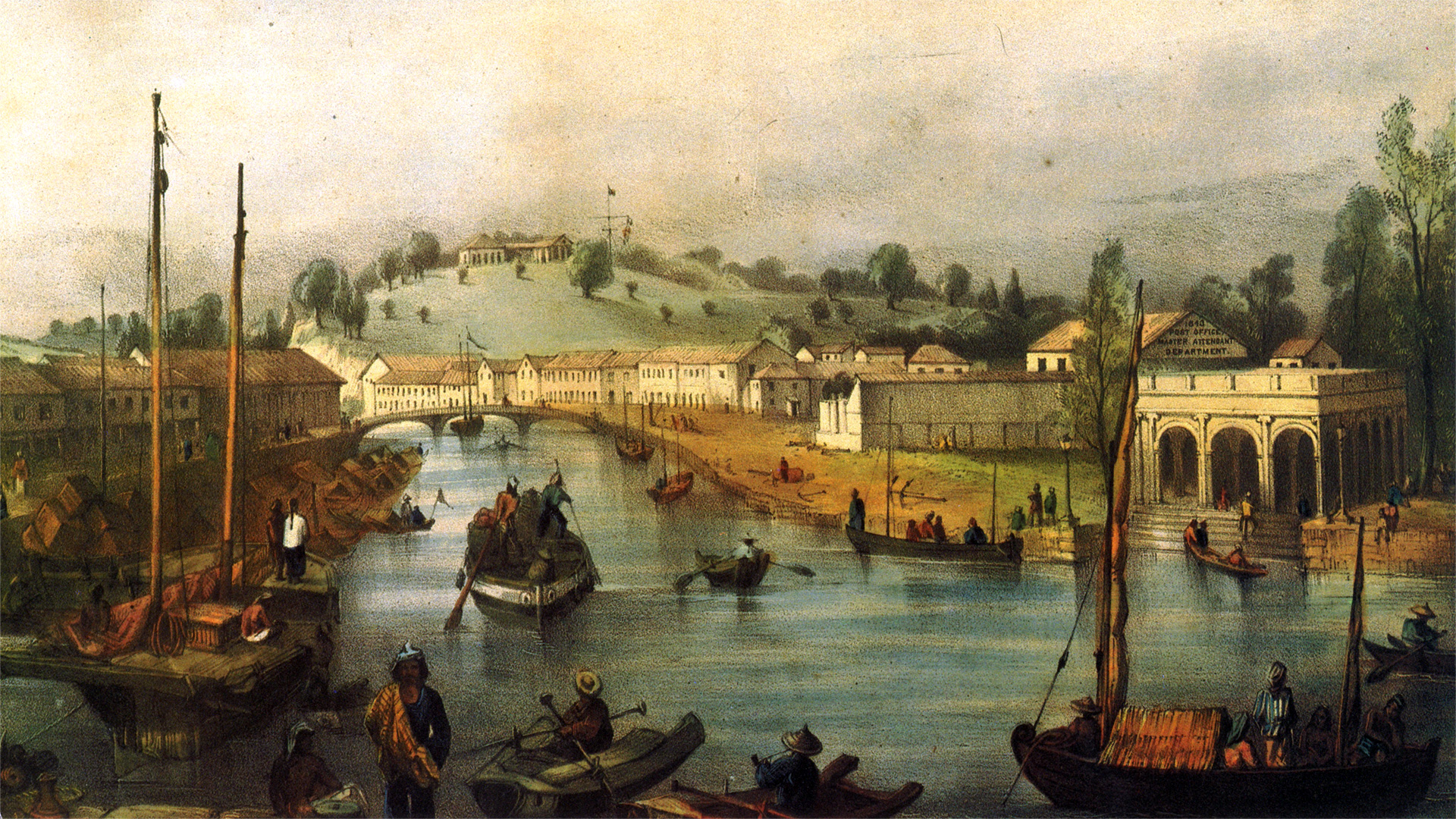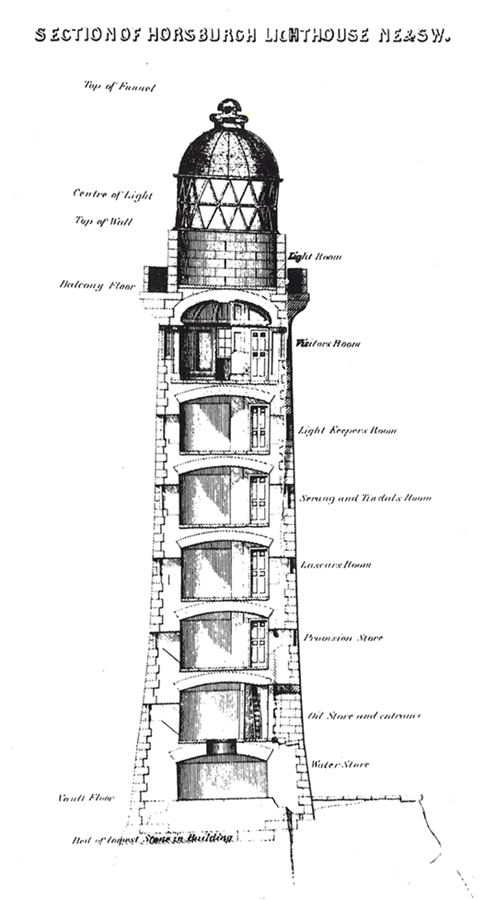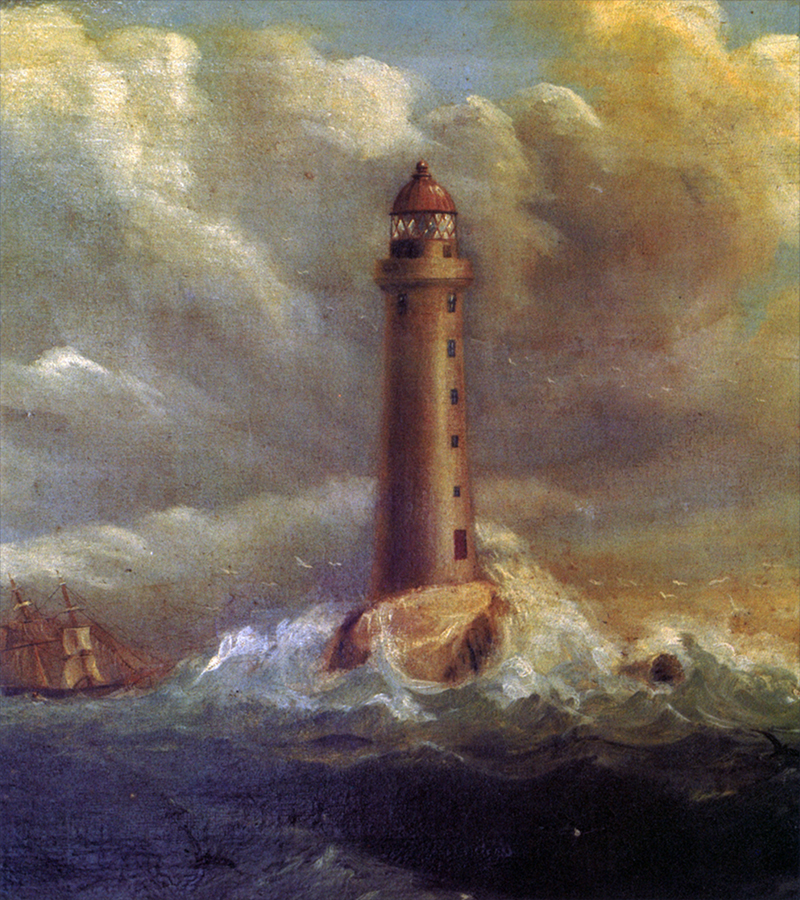The modern port of Singapore traces its origins to the mouth of the Singapore River and it is here that the port developed and flourished for its first 40 years. The River developed as the main commercial centre with a supplementary trading area for small craft at the estuary of the Rochore and Kallang Rivers.
When Stamford Raffles and his party arrived off Singapore on 28 Jan 1819 with the intention of establishing a trading station for the East India Company, one of his earliest tasks was to deploy a survey vessel to conduct a hydrographic survey of the port.
Subsequently the East India Company issued the first of its charts of Singapore Harbour in 1820. Admiralty charts of Singapore waters began to appear in 1840 and, as the Singapore Strait gained increasing importance as the main shipping channel between the Indian Ocean and the South China Sea, there followed further surveys and a succession of Admiralty charts for the benefit of merchant shipping.
In 1851 Singapore’s first lighthouse was erected at the eastern approaches to the Singapore Strait and it was aptly named after James Horsburgh, Hydrographer of the East India Company.
The East Indiamen and Opium Clippers from India, the assortment of Chinese Junks from Fukien, Hainan and Kiangsu, the Wangkang and Tope from Thailand and Indo-China, the Palari, Golekkan, Lambo and Leteh-ieteh from the Indonesian Archipelago and the Tongkang and Pinas from the Malay Peninsula, they all came to their respective anchorages off the Singapore River. The cargoes were then transported by lighters to Boat Quay where the greater part of the business was conducted. Boatyards developed along the Telok Ayer Street waterfront. Commercial Square, now known as Raffles Place, developed as an adjunct to Boat Quay and, until the reclamation of Collyer Quay in the 1860s, the buildings and premises reached the waterfront and had their own jetties for passengers and cargoes.
Although Singapore possessed virtually no natural resources and produced no manufactured goods, the exports of Singapore mounted to over $6 million within five years after the port was established. Singapore became a mart for the exchange of the produce from Indo-China, Thailand, the Malay Peninsula and the Indonesian Archipelago for the merchandise of India, China and Europe.
The Port of Singapore thus established itself as the entrepot port for the region and it served in this role for over a hundred years.
The administration of the Port was vested with the Master Attendant (Harbour Master) and the first appointment was made on 6 Feb 1819. The incumbent also functioned as Registrar of Imports and Exports and as Post Master in charge of overseas mail. Raffles had declared that “……. the Port of Singapore is a Free Port and the Trade thereof is open to Ships and Vessels of every Nation free of duty equally and alike to all” and this preamble appeared on the earliest regulations for the administration of the port which were promulgated in 1823.
Besides laying down the procedures for reporting the arrivals and departures of ships and their passengers and cargoes, the regulations also stipulated the charges for wooding, watering and ballasting ships calling at the port. Provision was also included for a register of cargo vessels.
Records of local shipping in the Master Attendant’s report book show that for the year 1822 a total of 139 square-rigged vessels entered the Port of Singapore. In 1834 a total of 517 squarerigged vessels totalling 156,513 Net Register Tonnage (NRT) was recorded.




